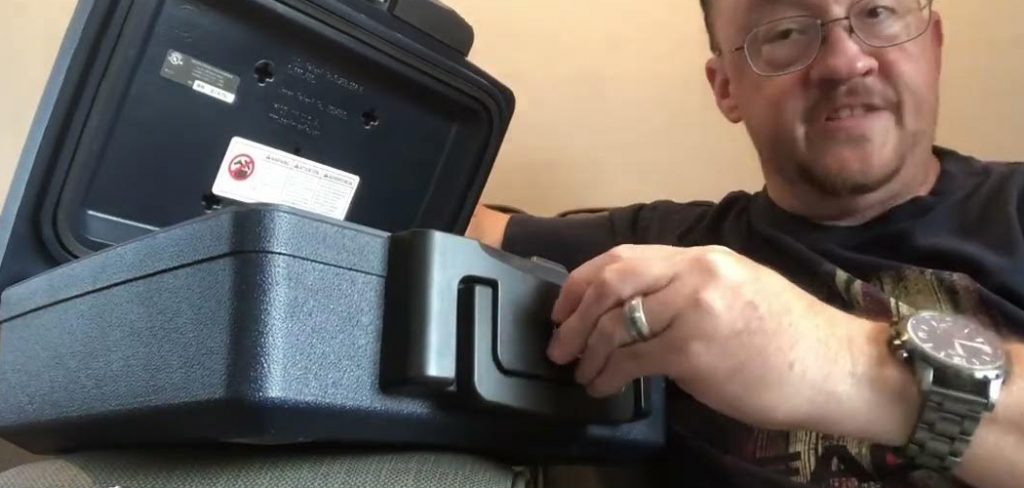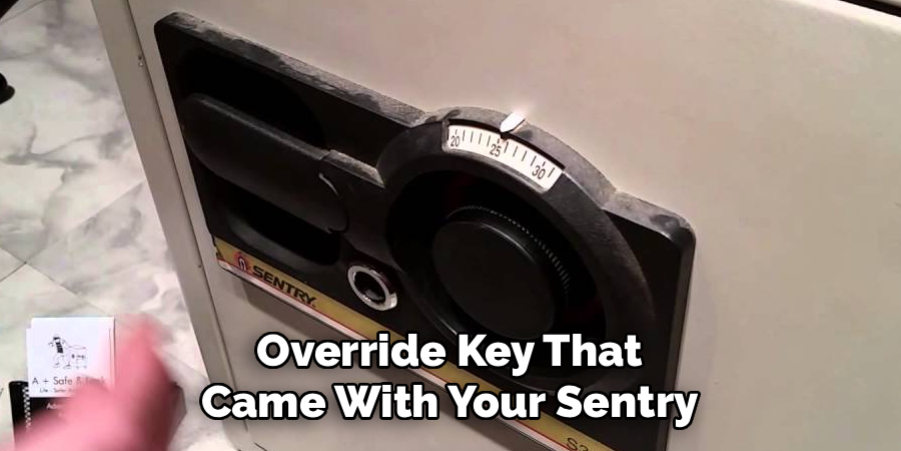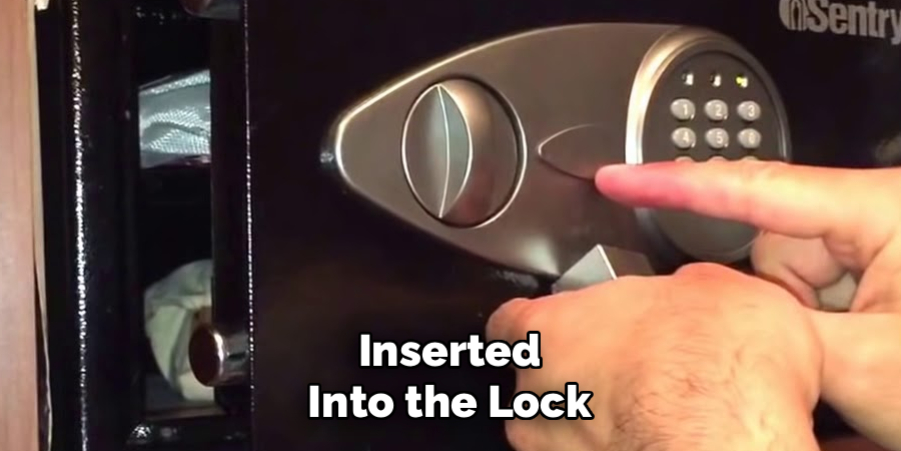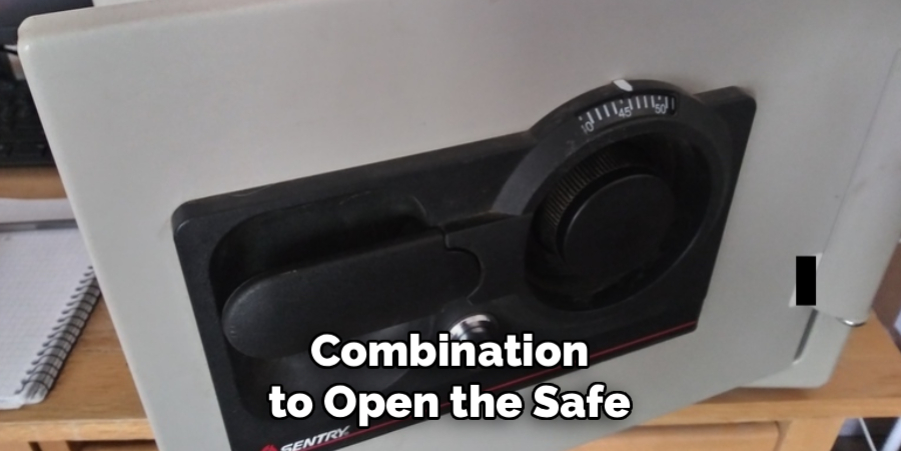A Sentry safe provides security and peace of mind, but that feeling can quickly turn to frustration when you can’t get it open. Whether the electronic lock’s batteries have died, you’ve forgotten the combination, or the keypad is malfunctioning, being locked out is a common problem.
Fortunately, many Sentry safe models are equipped with a physical key lock as an override system, giving you a reliable backup plan. This key is your direct line of access, bypassing the electronic components entirely. This guide will provide clear, beginner-friendly instructions on how to unlock sentry safe with key, ensuring you can retrieve your valuables without hassle.

When faced with the inconvenience of a locked safe, it’s important to remain calm and approach the situation systematically. Utilizing the physical key to access your Sentry safe is a straightforward process that requires minimal effort and no specialized tools. This method not only saves time but also ensures that your belongings remain secure while you regain access. Whether you’ve misplaced the safe’s code or are experiencing technical issues, using the key is a reliable solution to unlock your safe with ease.
Tools and Materials
To unlock your Sentry safe using the physical key, you will need the following items:
- The original physical key provided with your safe. Ensure it matches the model of your safe and is not damaged or bent.
- A flashlight (optional) to help locate the keyhole in low-light conditions or if the safe is positioned in a dimly lit area.
- Owner’s manual (optional) in case you need to reference specific instructions related to your safe model.
These basic tools and materials are typically all that is required to successfully access your safe using the key.
Understanding How to Use the Key
To unlock your safe using the key, begin by locating the keyhole. Depending on your specific safe model, the keyhole may be visible on the front panel or concealed behind a removable cover or logo plate. If the keyhole is hidden, gently remove the cover to expose it. Once uncovered, insert the key carefully into the keyhole, ensuring it aligns properly.
Avoid using excessive force to prevent damaging the key or the mechanism. Turn the key slowly in the indicated direction—usually clockwise or as specified in your owner’s manual—until the locking mechanism disengages. After hearing or feeling the lock release, open the safe door gently. Always store your key in a secure and memorable location to ensure future accessibility.
7 Step-by-Step Guide on How to Unlock Sentry Safe with Key
Step 1: Locate Your Override Key

Before you can begin, you must find the override key that came with your Sentry safe. This is a specific, often cylindrical or flat key, that is distinct from a standard house key. When you first purchased your safe, it would have been included in the packaging, usually in a separate plastic bag along with the manual. It is critically important that you store this key in a secure, memorable location outside of the safe itself. A common mistake is locking the override key inside the very safe it is meant to open. Check your desk drawers, filing cabinets, or with other important documents.
Step 2: Find the Keyhole
With the key in hand, you now need to find the keyhole on the safe. On most Sentry safes with electronic keypads, the lock cylinder is not immediately visible. It is often hidden behind the keypad housing or a small, discreet cover to maintain a clean look and add a layer of security. Look for a plastic panel surrounding the keypad that may slide or pivot away. On other models, the keyhole might be located directly to the side of the keypad or even underneath the handle. Gently explore the area around the electronic lock to reveal the hidden key entry point.
Step 3: Insert the Key into the Lock
Once you have exposed the lock cylinder, you can insert the override key. It’s important to use the correct key provided by Sentry for your specific model. The key should slide into the lock smoothly without requiring excessive force. If you feel resistance, do not try to jam it in. Double-check that you have the key oriented correctly and that there is no debris or obstruction inside the lock cylinder itself. A gentle wiggle may be necessary, but the key is designed to fit precisely into the lock mechanism when inserted properly.
Step 4: Turn the Key and Handle

After the key is fully inserted into the lock, the next step is to turn it. For most Sentry safes, you will turn the key clockwise. As you turn the key, you may feel a distinct “click” as the locking mechanism disengages. This action overrides the electronic lock and moves the internal bolts. While holding the key in the turned position, you must then simultaneously turn the safe’s main handle to retract the locking bolts and open the door. The handle will not turn unless the key is fully turned to the unlocked position.
Step 5: Address a Stuck Key or Handle
Sometimes, even with the key turned, the handle might feel stuck. This can be due to pressure on the locking bolts from the door seal. To relieve this pressure, try pressing firmly on the door with your free hand while you turn the handle. This slight inward push can create just enough slack for the bolts to retract smoothly. If the key itself is difficult to turn, ensure it is fully inserted. You should not have to apply extreme force; a stuck lock may indicate a more serious internal issue that could require professional assistance to avoid breaking the key.
Step 6: Open the Safe Door and Access Your Valuables
With the key turned and the handle successfully rotated, the heavy-duty locking bolts will retract from the safe’s frame. You can now pull the door open. Once inside, you have successfully bypassed the electronic lock. If the initial problem was dead batteries, this is the time to locate the internal battery compartment and replace them. If you had forgotten the combination, you can now retrieve the owner’s manual to find instructions on how to reset it. This gives you the opportunity to resolve the primary issue that required using the override key.
Step 7: Test the Lock and Store the Key Securely

After you have resolved the issue, it’s wise to test everything before closing the door. With the door still open, try locking and unlocking it with both the electronic keypad and the override key to ensure all components are working correctly. Once you are confident everything is in order, close and lock the safe. The final, and perhaps most important, step is to return the override key to its secure storage spot—outside of the safe. This ensures you will have it ready for any future emergencies, preventing you from being locked out again.
Frequently Asked Questions (FAQs)
What Do I Do if I Lost My Sentry Safe Key?
If you have lost your override key, you cannot get a replacement from a standard locksmith. You must contact Sentry Safe directly through their official website. You will need to provide the safe’s model number and serial number to prove ownership. After verification, you can order a replacement key. This is why it is crucial to record your model and serial number and keep that information in a separate, safe place.
Will the Key Open the Safe if the Batteries Are Dead?
Yes. The override key is a completely mechanical bypass. It is specifically designed to work when the electronic components, including the battery-powered keypad, have failed. The key lock is a separate system that physically moves the bolts without needing any electrical power, ensuring you can always get into your safe as long as you have the key.
My Sentry Safe Has Two Keys. What Is the Second Key for?
On some Sentry safe models, a dual-locking system is used for enhanced security. This often requires you to use both a key and a combination to open the safe. In this case, the key is not an override but part of the primary locking process. One key may lock a specific internal compartment, while the other is part of the main door lock. Always refer to your owner’s manual to understand your specific model’s locking mechanism.

Why Won’t My Key Turn in the Lock?
If your key inserts but won’t turn, there could be a few reasons.
- Pressure on bolts: Try pushing in on the door while turning the key to relieve pressure.
- Stuck solenoid: The electronic lock’s solenoid may be stuck. Trying the electronic code one more time might release it.
- Damage: There could be internal damage to the lock mechanism.
Do not force the key, as it could break off in the lock.
Can a Locksmith Open My Sentry Safe if I Lose the Key and Combination?
Yes, a professional and certified safe technician or locksmith can open a Sentry safe. They have specialized tools like borescoping equipment and drilling rigs designed to bypass locking mechanisms without completely destroying the safe. However, this service can be expensive. Trying to recover your combination or ordering a replacement key from Sentry first is always the more cost-effective solution.
Conclusion
Being unable to open your safe is a stressful situation, but the override key is the simple and effective solution designed for this very problem. By understanding that the keyhole may be hidden and that the process involves turning both the key and the handle, you can confidently gain access when electronics fail. This mechanical bypass is a testament to a well-thought-out security design, giving you ultimate control. Now that you know how to unlock sentry safe with key, you can be sure that your most important documents and valuables are never truly out of reach.
About
Safety Fic is a distinguished figure in the world of Diy design, with a decade of expertise creating innovative and sustainable Diy solutions. His professional focus lies in merging traditional craftsmanship with modern manufacturing techniques, fostering designs that are both practical and environmentally conscious. As the author of diy, Safety Fic delves into the art and science of Safety Fic-making, inspiring artisans and industry professionals alike.
Education RMIT University
(Melbourne, Australia) Associate Degree in Design (Safety Fic) Focus on sustainable design, industry-driven projects, and practical craftsmanship. Gained hands-on experience with traditional and digital manufacturing tools, such as CAD and CNC software.
Nottingham Trent University
(United Kingdom) Bachelor’s in diyfastly.com and Product Design (Honors) Specialized in product design with a focus on blending creativity with production techniques. Participated in industry projects, working with companies like John Lewis and Vitsoe to gain real-world insights.
Publications and Impact
In diy, Safety Fic his insights on indoor design processes, materials, and strategies for efficient production. His writing bridges the gap between artisan knowledge and modern industry needs, making it a must-read for both budding designers and seasoned professionals.
